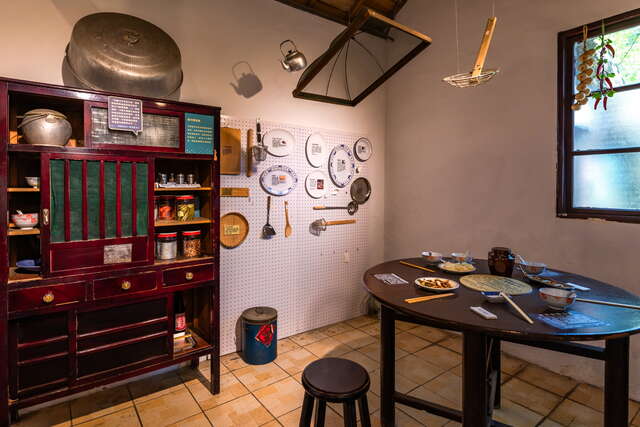Matsu New Village Cultural and Creative Park Introduction
Matsu Village was established in 1957 and was originally planned as a residential area for the families of the Army's 84th Division stationed in the Matsu Islands. It once gathered many high-ranking military families and earned the nickname "Stars Filling the Sky." Today, Matsu Village has withstood the test of time and has become an important base for preserving the culture of military dependents, making it worthwhile for travelers to slow down and savor the experience. The unique charm of Matsu Village lies in its well-preserved military dependent village appearance. From the design of the living quarters, one can clearly see a microcosm of life based on rank and power distribution, accurately reflecting the living conditions of that time. In 2004, the Taoyuan City Government designated Matsu Village as a historical building, adhering to the philosophy of "restoration while revitalizing" during renovations, successfully transforming it into a model of the integration of military dependent culture and cultural creativity, allowing the once-thriving scene to flourish again. The heart of visual culture in Matsu Village can be experienced at the Zhongli Light Cinema, where you will feel the unique cultural pulse of Matsu Village. This cinema, rich in artistic atmosphere, has 75 seats and serves as an important base for local film education. The monthly themed film exhibitions and selected movies provide free visual feasts for citizens while attracting numerous film enthusiasts to appreciate and exchange ideas. Transforming Historical Spaces into Art Matsu Village's No. 1 to No. 3 quarters have recently been transformed into the "Matsu Experiment Art Gallery," a stage for showcasing creativity that attracts many young artists and cultural creative workers. The annual open call for exhibitions turns spaces that originally carried the history and memories of the military dependent village into lively cultural and creative exhibition areas, becoming an excellent platform for art and creative exchange. A Cultural Space for Family Fun Amid the beautiful scenery of the military dependent village, you can also share the endless charm of art with your children. The "Matsu Preschool Art Institute," restored from the original Matsu Kindergarten, is currently planned as a base for children's art education, providing interactive spaces for parents and children, along with performance and cultural education activities that integrate art into life and promote cultural education from an early age. Discovering Unique Artisan Shops in Matsu Village Matsu Village provides a space for artisans to showcase their skills and creativity, with many distinctive small shops located within the area. It is not only a great place for taking photos but also features a variety of delicious eateries and handmade popsicle shops, allowing visitors to taste the flavors of the military dependent village while experiencing the unique charm of Matsu Village. Additionally, the area offers diverse activities such as handmade fragrance making, pottery creation, leather carving, and qipao customization and experiences, making it an ideal choice for leisurely relaxation on weekends.





































